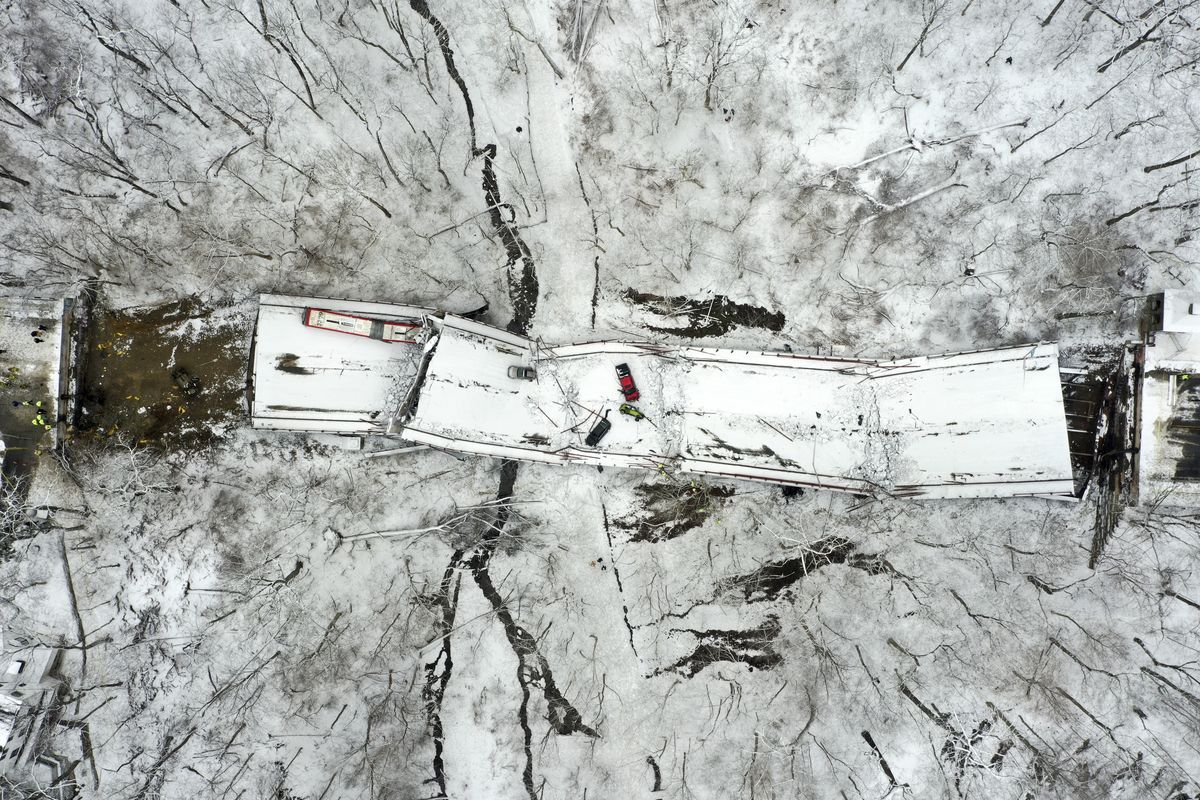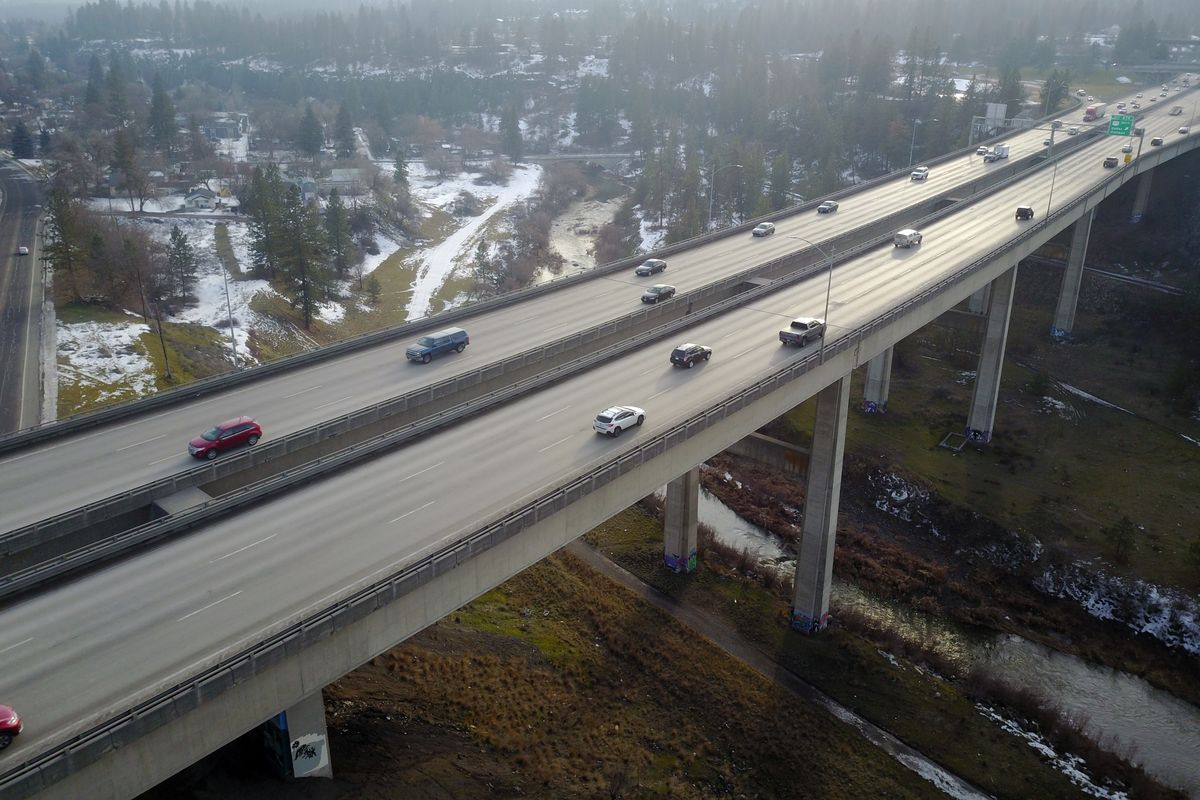Getting There: Several Spokane, Kootenai county bridges in ‘poor’ condition – what does that mean?
The Interstate 90 bridge over Latah Creek, which carries thousands of cars a day, is on a list of bridges rated as “poor” by the Federal Highway Administration. (Jesse Tinsley/THE SPOKESMAN-REVI)
The 52-year-old steel span that collapsed in Pittsburgh on Friday, injuring a reported 10 motorists, had been rated as “poor” by inspectors in the months before its failure.
Several bridges in the Inland Northwest also carry that distinction, which is intended to designate where to spend limited dollars for repair, said Mark Gaines, bridge structural engineer for the Washington Department of Transportation.
“We’re identifying needs out there that need to be corrected through preservation and maintenance on the bridge,” Gaines said. “But none of these are tied to safety.”
Inspectors look at all features of the bridge for potential deficiencies, including what is likely the most apparent to motorists driving over a span – the surface, or deck.
“If you’re driving over a bridge every day, what you’re probably going to see most is the deck,” Gaines said. That includes potholes, ruts in the road and other road surface defects.
Inspectors also are looking at the girding directly underneath the road surface, known as the superstructure, and the foundation holding all that material in place, known as the substructure.
Of the most-traveled bridges in the Inland Northwest rated in “poor” condition, the Interstate 90 span over Latah Creek west of downtown, is the busiest. An estimated 40,000 motorists travel over the bridge each day, according to the Federal Highway Administration, on a structure built in 1963 that is in need of substructure repairs.
“It is just us recognizing that we do need to monitor the substructure out there,” Gaines said of the Latah Creek bridge. “The columns, and the foundation, and probably we need to program some work out there to remedy some settlement that we’ve seen on that bridge.”
Whether the deficiencies are seen in the deck, the super- or substructure, Gaines said, no need is more urgent than another. If crews and inspectors see any safety issues with a bridge, they will issue load limit restrictions or, in very rare cases, close a bridge entirely until a repair is made. They may also increase the rate of inspections of a bridge that is in more urgent need of repair.
All of that costs money, and Gaines said state funding for WSDOT maintenance and preservation projects is between 40% and 50% of what the agency says it needs.
“There’s an awful lot of bridges that stay in ‘poor’ for longer than we’d like to see,” he said. “And that’s just a mechanism of not really having the resources we need to really keep the bridges where we’d like to see them.”
Help will arrive in both Washington and Idaho soon for any restoration work, part of the $1.2 trillion infrastructure bill passed out of Congress last year. White House estimates state that Washington will receive $605 million over the next five years to fix its 416 bridges listed in poor condition. Idaho will get $225 million over the same time frame to address its 286 bridges in poor condition.
WSDOT is waiting for guidance from the state Legislature this session to determine how much of that money will be available to repair their bridges. Gov. Jay Inslee, in his 2022 supplemental budget request to the Legislature, set aside at least $200 million each biennium through 2031 for bridge repair.
“There’s not a lot of detail yet on exactly how the money’s going to be allocated,” Gaines said. “A lot of the money will go for WSDOT bridges, but a large part goes to local agencies, cities and counties because they have a lot of preservation needs just like we do.”
Seasonal load restrictions in place on county roads
Commercial and truck drivers pay heed, new seasonal load restrictions have been put in place on some county roads.
To prevent road damage, the county institutes load limits of weight per tire during the spring. Those weights can range from 1,800 pounds per tire to 4,500 pounds per tire, based on tire width.
A full map of roads with seasonal weight restrictions can be found on the county’s website, and restrictions are posted on signs throughout the county. Current restrictions are mostly located in southern Spokane County, but new restrictions may be imposed as the spring continues.
Work to watch for
Howard Street between Boone and Cataldo avenues north of downtown Spokane will be closed through Friday with detours.
The northbound curb lane of Nevada Avenue between Olympic and Wabash avenues in northeast Spokane will be merged and flagged through Friday for Track Utilities work.


